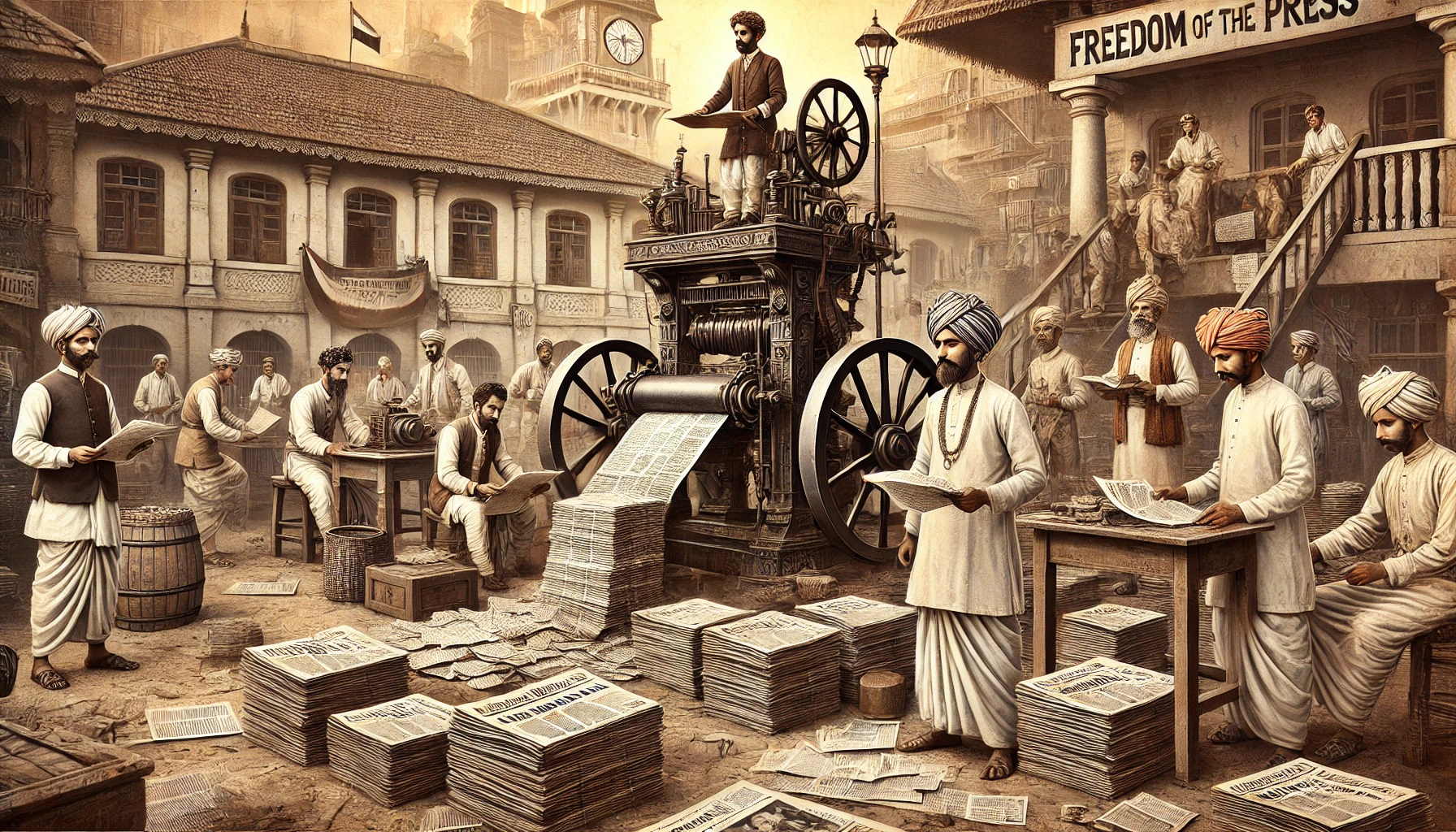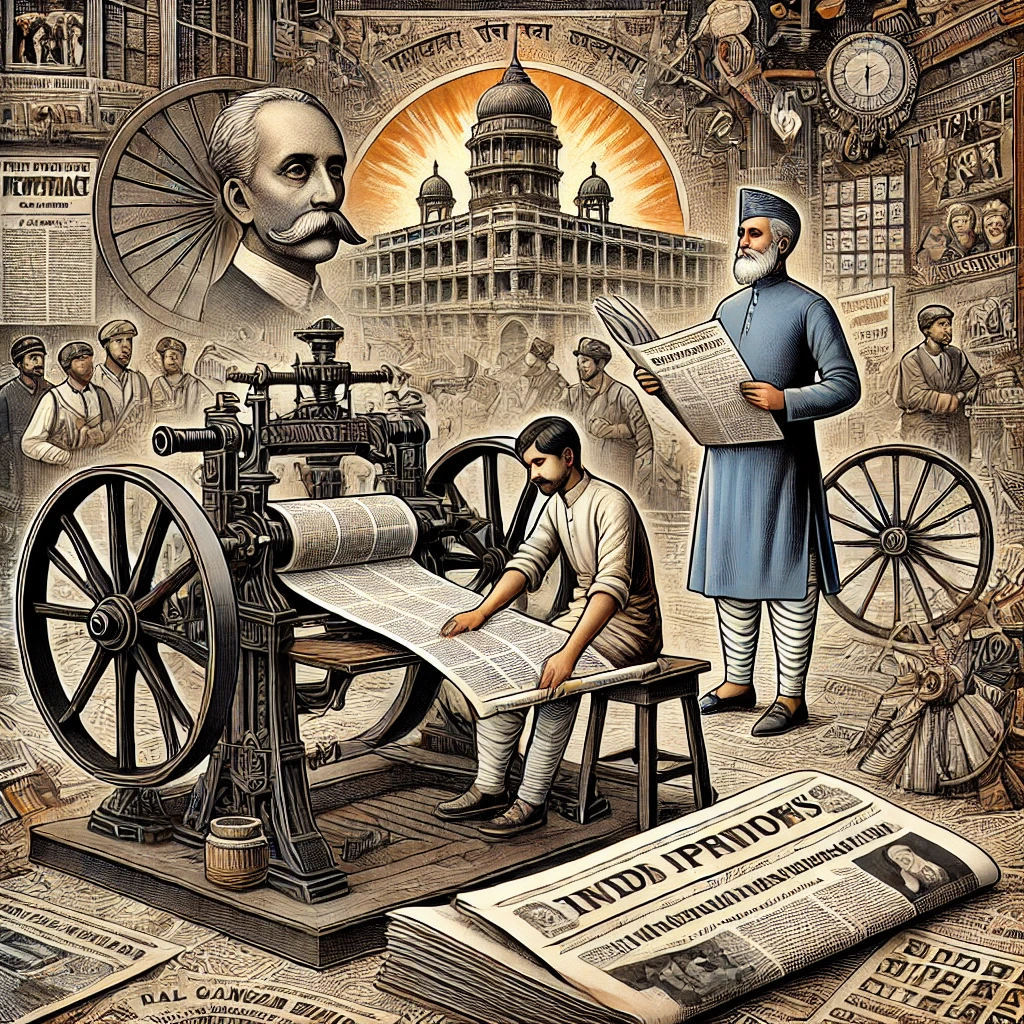

The press in India has been instrumental in shaping public opinion and driving the fight for independence. Starting with the first published newspaper, ‘Hickey’s Bengal Gazette,’ the India media evolved from a colonial tool to a powerful voice for the Indian people, spreading nationalist ideas and uniting the masses. Leaders like Bal Gangadhar Tilak used journalism in India to challenge British rule and inspire the freedom movement.
As the History of press laws in India developed, colonial regulations tried to suppress the Indian press. Despite these restrictions, the press in India thrived, with figures like Tilak using it to advocate for self-rule. Today, the press in India remains a vital force for democracy and a voice for the people.
| GS Paper | General Studies Paper I |
| Topics for UPSC Prelims | Early development of the press in India, Key regulations (e.g., Vernacular Press Act), Role of Bal Gangadhar Tilak in press freedom |
| Topics for UPSC Mains | Impact of the press on the freedom struggle, Press regulations, and their political implications, Tilak’s use of the press for nationalism |
The history of journalism in India began with the establishment of the first published newspaper, the ‘Hickey’s Bengal Gazette’ in 1780. It was a period when newspapers were scarce and primarily served the European audience in India. However, the importance of newspapers in informing and mobilizing the Indian public was soon recognized. The press in India slowly began to cater to the local population, focusing on issues relevant to Indian society.


The early 19th century saw the emergence of several important publications in various regional languages. Newspapers like ‘Samachar Darpan’ in Bengali and ‘Bombay Samachar’ in Gujarati marked the spread of journalism in India to a broader audience. These newspapers played a vital role in creating a sense of national consciousness and unity among the people of India. The press in India began to emerge as a powerful medium for expressing public opinion and rallying people against colonial oppression.
The press in India was a crucial ally in the freedom struggle. Newspapers like ‘Kesari’ and ‘Maratha’ founded by Bal Gangadhar Tilak. They were instrumental in inspiring the masses. Tilak used these publications to criticize the British government and advocate for Swaraj (self-rule). His bold and fearless journalism in India led to the imprisonment and trial of Tilak, showcasing the press in India as a force that could challenge colonial power.
The History of press laws in India is a story of constant struggle between freedom of expression and colonial control. The British government introduced several laws to curb the growing influence of the press in India. The Vernacular Press Act of 1878 was one such law, aimed at silencing Indian-language newspapers critical of British policies. Despite these challenges, the press in India continued to grow, adapting to new regulations while pushing the boundaries of free speech.
Post-independence, the History of press laws in india continued to evolve, reflecting the changing dynamics of Indian society. The freedom of the press was enshrined in the Constitution, but it came with certain restrictions. Laws such as the Press Council Act of 1965 were introduced to maintain the ethical standards of journalism in India. The press has since been regulated by various bodies, ensuring that it remains free yet responsible.
Tilak’s role in the press cannot be overstated. His newspapers were more than just publications; they were platforms for revolution. Tilak used the Indian media to unite people across regions, castes, and religions, creating a strong foundation for the independence movement. His arrest and trial for sedition further highlighted the power of the press in India in resisting colonial rule.
Throughout its history, journalism in India has been a tool for social change. It has exposed injustices, informed the public, and advocated for the rights of the oppressed. The press has also played a role in promoting social reforms, such as the abolition of practices like Sati and child marriage. Newspapers have provided a platform for reformers to voice their opinions and mobilize public support.
In the modern era, the press in India faces new challenges. The rise of digital media has transformed the landscape of India media, with traditional newspapers struggling to adapt. Additionally, issues like fake news, media ownership concentration, and censorship continue to pose threats to the freedom of the press in India. Despite these challenges, journalism in India remains a vital pillar of democracy, holding power to account and informing the public.
The press in India has come a long way from its humble beginnings with the first published newspaper. It has weathered numerous challenges, from colonial censorship to modern-day issues like digital transformation. The History of press laws in india is a testament to the ongoing struggle for press freedom. Bal Gangadhar Tilak’s contributions to journalism in India have left a lasting legacy, inspiring future generations of journalists to continue the fight for truth and justice. The press in India remains a powerful force for change, playing a crucial role in shaping the nation’s future.
| History of Press in India UPSC Notes |
| 1. The press in India began with ‘Hickey’s Bengal Gazette,’ the first published newspaper in 1780, mainly serving European readers. 2. Early Indian newspapers faced strict colonial regulations, limiting their ability to express nationalist sentiments and criticize British policies. 3. The press evolved as a powerful tool for spreading nationalist ideas, creating unity, and mobilizing people during the freedom struggle. 4. Bal Gangadhar Tilak used newspapers like ‘Kesari’ and ‘Maratha’ to advocate for self-rule and criticize British colonial rule. 5. The Vernacular Press Act of 1878 aimed to suppress Indian-language newspapers critical of the British, marking a significant event in press history. 6. Despite strict press laws, the Indian media continued to grow, contributing to the nationalist movement and the fight for independence. 7. Post-independence, the press in India was regulated by laws ensuring freedom of speech, balanced with ethical standards and responsibilities. 8. The legacy of Indian journalism remains strong, with the press playing a vital role in upholding democracy and acting as a voice for the people. |
Minilateralism is transforming the global diplomacy as it introduces smaller, targeted partnerships in order to…
India’s GDP Growth Forecast Revised Downwards by RBI The Reserve Bank of India (RBI) on…
India is losing its opportunities to sustain agriculture due to severe soil degradation. Recent studies…
India’s Economic Growth Outlook Revised The Reserve Bank of India (RBI) has brought down India's…
Startup Ecosystem in India has emerged as a global leader, with over 140,000 recognized startups…
India’s GDP Growth Forecast Revised by RBI The Reserve Bank of India had trimmed its…